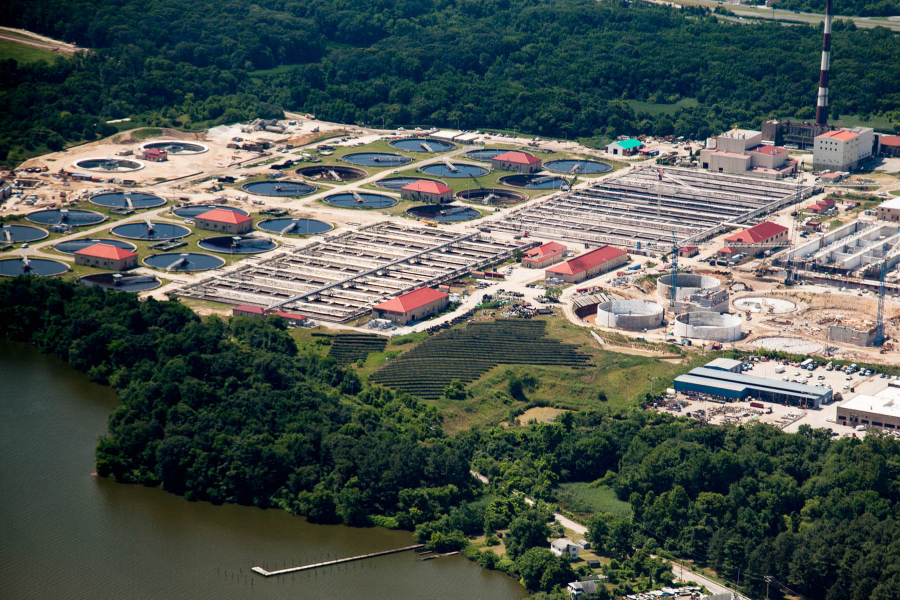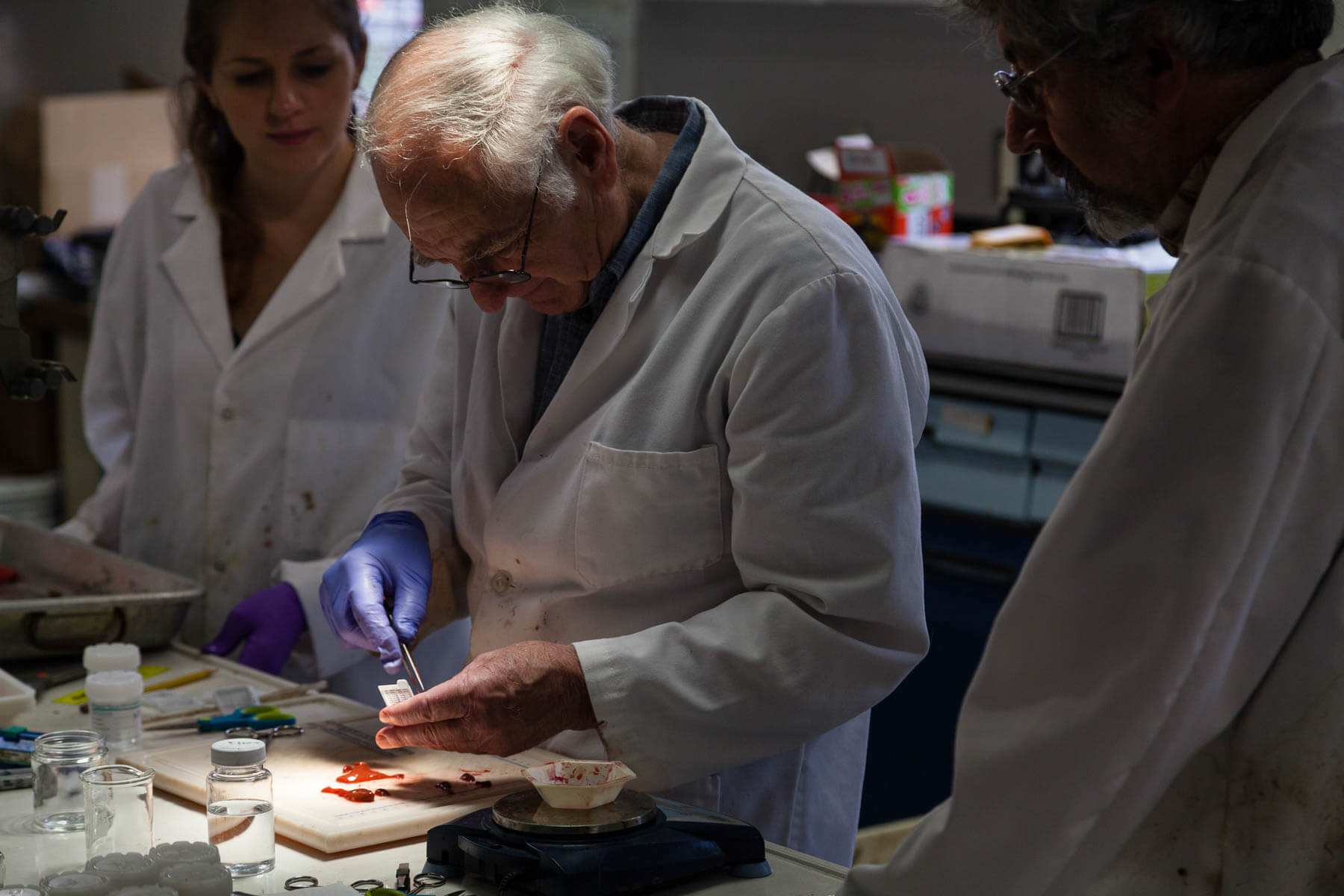Wastewater treatment plants use technology to tackle a lingering chemical

Nutrients and sediments are typically what come to mind when you hear the words, “Chesapeake Bay pollution”. But they aren’t the only things contaminating the Bay--large portions of the entire watershed are plagued by particularly persistent organic pollutants (POPs) known as polychlorinated biphenyls, or PCBs, which last in the environment for years.
Decades ago, these man-made substances were widely used as additives to paint and caulk, or as coolants and lubricants in electrical equipment like transformers. While unknown at the time, PCBs cause significant damage to people and the environment. Incredibly toxic, they are linked to liver and thyroid issues, neurological changes and some cancers. The World Health Organization and the Environmental Protection Agency classified PCBs as probable human carcinogens and their use and production were banned by the United States in 1979. Now more than 40 years later, many of the PCBs produced prior to 1979 still persist in our environment, polluting both air and water.
PCBs are one of the main reasons for fish consumption advisories in the Chesapeake region, as fish accumulate PCBs at a higher level than other aquatic species. Predators like striped bass and white perch consume contaminated prey, while bottom-dwelling fish (e.g. catfish) are exposed to PCBs that cling to sediment. When people—particularly children and pregnant women—eat those contaminated fish, they consume the PCBs as well and transfer that danger to themselves.
Besides posing substantial risks to human health, PCBs also threaten the species that live in the environment around us. Historically, one of the Bay region’s most iconic species, ospreys, fell victim to PCBs and another chemical called DDT. These toxic contaminants made osprey shells so thin that adults would crack their eggs when they tried to sit on them, destroying the next generation of this impressive bird. While chemical bans and conservation efforts have helped osprey populations once again to soar, the danger of PCBs linger.
As of 2016, 82% of the Chesapeake Bay, including its non-tidal rivers and streams, is considered to be fully or partially impaired by PCBs.

How wastewater treatment plants help reduce PCBs
PCBs are hydrophobic, which means they do not mix with water. Before the ban in 1979, PCBs in industrial sites or released in sewage would remain in pipes, settling into sediment and fatty deposits. They persisted in this state for decades until they were finally swept into wastewater treatment plants.
Wastewater treatment plants take influent—which refers to the used water from commercial, industrial and residential facilities, sewage and occasionally stormwater—and attempt to remove the pollutants before releasing the now-cleaned water, known as effluent, back into the environment.
When the Chesapeake Bay Total Maximum Daily Load for nutrient and sediment pollutants was put in place in 2010, each of the watershed jurisdictions—Delaware, the District of Columbia, Maryland, New York, Pennsylvania, Virginia and West Virginia—took on the responsibility of reducing nutrient and sediment pollution to the Bay. One of the ways in which this is accomplished is through wastewater treatment plant upgrades. Over the past thirty years, these upgrades have become one of the biggest successes in nutrient reduction, preventing over 900 million pounds of nutrients from entering the Bay and its tributaries. And, it turns out, they provide a secondary benefit—reducing PCBs.
The Chesapeake Bay Program’s Toxic Contaminants Workgroup released a report in 2019 that investigated the added benefit of reducing PCBs when wastewater treatment plants were upgraded. Methods geared toward reducing nutrients used two new technologies, biological nutrient removal and the additionally upgraded enhanced nutrient removal. In these processes, microorganisms trap, convert or break down nutrients as the wastewater is converted into liquid effluent and a solid component. The effluent is cleaner, and the newly created biosolid is a safe, compostable product that can be applied to cropland as a fertilizer and soil amendment. While not designed to target PCBs, the study found that these upgraded processes can remove approximately 90-95% of the total PCBs in wastewater. In future research, there is a need to learn more about PCBs that end up as biosolids and whether they eventually cycle back into the Chesapeake Bay ecosystem after being applied to the land.
Some wastewater treatment plants go even further when it comes to removing PCBs. At the Back River Wastewater Treatment Plant in Baltimore, Md., researchers found a surprising 97% reduction in the amount of PCBs removed from the effulent over a 16-month period. “Removing PCBs and contaminants is not what wastewater treatment plants are designed to do,” remarked study co-author Dr. Trevor Needham. “They are designed to remove pathogens and nutrients, so the fact that the treatment process removes 97% of the PCBs is a nice co-benefit.”
While encouraging, the remaining 3% of PCBs are still problematic. Researchers expected to find the highest PCB risk in the much-heavier biosolids, but found to their surprise that the remaining three percent of PCBs discharged in the liquid effluent actually posed the greatest risk to the ecosystem, as the toxics accumulated much more rapidly in the fish and other wildlife of the river.
The Toxic Contaminants Workgroup report makes several recommendations for further reducing PCBs during the wastewater treatment process, but new tools and techniques must be coupled with effective policy approaches and long-term management strategies to address this complex issue. Dr. Needham cautions that it may not be feasible or cost-effective to remove the remaining PCBs from the wastewater treatment plant effluent, so “removing PCBs at the source is the best approach to reduce loading to the river.”
Visit the Chesapeake Bay Program Toxic Contaminants Workgroup to learn more about the efforts to reduce chemical contamination in the watershed.

Comments
Thank you for shedding light on the innovative technologies used in wastewater treatment plants to tackle persistent chemical pollutants. It's remarkable how these advancements are enabling cleaner water systems and contributing to a healthier environment. Keep up the great work in spreading awareness about the importance of sustainable water management!
I loved that you shared that a wastewater treatment plant in Baltimore was able to reduce the amount of PCBs by 97%. They are installing a wastewater treatment plant in my city and the construction is happening right now. I hope that this one will be able to treat the water and get rid of PCBs! http://www.evergreenwastewater.com.au/service
It's interesting how these treatments can reduce PCBs. I'm on the city council, and we have been talking about wastewater treatment lately. It is definitely important for the community.
Great article. Have you heard of and what do you think about Lifequest World Corps. They are doing great things in other countries and are about to start a treatment plant in Napa Vally.
Hi Michelle,
The article was very helpful and promising. I'm wondering if you have more information regarding some reliable and cost-effective approachs to reduce the PCBs concentrations in the discharged stormwater from business facilities.
Thanks
Michelle, it's good to know that once wastewater treatment plants are upgraded, they can remove around 90-95% of the total polychlorinated biphenyls (PCBs) in wastewater. I've been fascinated with wastewater treatment plants ever since one was constructed in our town a few years ago. Hopefully, the plant in our town has an upgraded wastewater treatment equipment from a trusted supplier so they're able to eliminate more PCBs from wastewater. Thanks for the informative article! http://www.vandsolutions.com/wastewater-equipment.html
Thank you!
Your comment has been received. Before it can be published, the comment will be reviewed by our team to ensure it adheres with our rules of engagement.
Back to recent stories